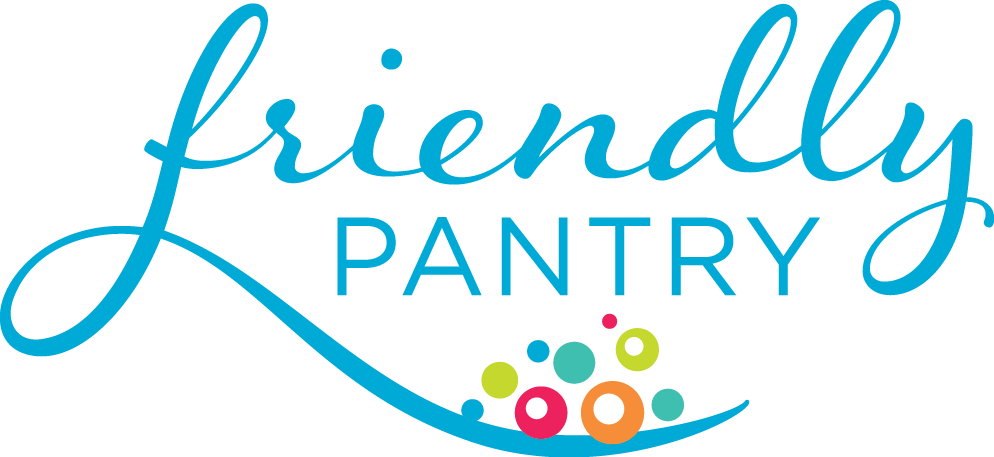Anaphylaxis Policy in Childcare That Protects Kids
(and is easy to implement!)
Hey there, I’m Corinna Meckelborg.
I’m a 16-year food allergy mom, and I’ve been a Food Allergy Coach for over 6. I’ve helped hundreds of food allergy parents keep their kids safe.
I normally write my blog for food allergy moms & families, but I’ve written this blog specifically for childcare providers because I want to make it easy to manage food allergies safely and create the best anaphylaxis policy in childcare, preschool, or daycare.
That said, if you’re a parent looking to learn more about how to educate your childcare provider, this will be helpful for you too.
First, I want you to know that I have the experience and expertise to help you. I’ve completed the following training:
University of Calgary Bachelor of Commerce Degree
Certified AllerCoach
Allergen Training for the Foodservice and Food Retail Industry by TrainCan, Inc
Anaphylaxis in ChildCare Settings: What Staff/Caregivers Need to Know by Allergy Aware
Anaphylaxis in the Community by Allergy Aware
Anaphylaxis in Schools by Allergy Aware
Sixteen years of personal experience safely managing multiple severe food allergies
I’m based in Canada, but the information you see here will be helpful for preschools and childcare centers in Canada and the United States. That said, always check with your regulatory body to see what is required in your location.
I know you want to protect kids in the easiest and safest way possible for your childcare or daycare, so that’s what we’ll focus on.
I also know that creating an anaphylaxis policy can seem difficult to understand and implement. I hope to simplify it for you, so keep reading.
Why Good Anaphylaxis Policy in Childcare is Essential
First of all, I know you take child safety very seriously. Because of this, you might feel a bit pressured and a little fearful about HOW to implement an anaphylaxis policy in your childcare center.
I get it.
It’s a lot of responsibility and does take some planning and adjustments, but it’s worth getting through those feelings and not putting it off because having a sound anaphylaxis policy is really important for your childcare center or preschool.
Here are 3 reasons why, but there are many more!
Food allergies are not going away and the incidence of food allergies is increasing. Keep kids & your business safe by addressing this now. Don’t wait.
Food allergies are a real part of life for 8% of kids. That’s 8 out of every 100 kids or around 2 per every 25 kids.
Don’t underestimate anaphylaxis. Food allergies are REAL and the threat of anaphylaxis is real and can be fatal.
What is anaphylaxis and how does it happen?
Anaphylaxis is a life-threatening reaction that can result from even traces of an allergen getting into an allergic child’s mouth, nose, eyes, or diaper areas.
According to Food Allergy Research & Education, symptoms of anaphylaxis can be shortness of breath, wheezing, repetitive cough, and swelling of the tongue, mouth/lips/face. It can include many hives, all over the body (BUT doesn’t have to include hives). These are the most commonly known symptoms, but anaphylaxis can also include faintness, pale or bluish skin, weak pulse and dizziness, a tight or horse throat, trouble swallowing, repetitive vomiting and severe diarrhea, and even the feeling that something bad is about to happen and confusion.
These are just the severe symptoms; for a full list and more detail, go to this Anaphylaxis Emergency Plan, also called an Anaphylaxis Management Plan. More on this later!
Kids can be allergic to ANY food, but there are common allergens that account for most of the anaphylactic reactions. In the US, the most common allergens are eggs, milk, peanuts, tree nuts, wheat, soy, fish, shellfish, and sesame. In Canada, it is those plus mustard and sulfites.
What is The Best Policy for Anaphylaxis in Childcare?
In my opinion, there are 3 things you need to do when it comes to keeping food allergy kids safe and staff prepared.
These 3 things are:
Use effective anaphylaxis policies & protocols.
Every childcare center is different, so you will need to take time to go through all areas and scenarios where food impacts your center and make adjustments to keep food allergy kids safe.
One way to do this is to go through a standard and non-standard day and list all of the times that food becomes part of the day. This could include snack time, celebrations, field trips, substitute teachers, and more.
How will you ensure every single food is allergy-friendly? How can you reduce the chance of cross-contact?
Remember, EVEN if you know how to use the EpiPen, reducing the chance that a child comes into contact with their food allergens is essential, and can be a big pitfall in a childcare situation.
If this seems overwhelming, I have something that will help you feel confident you aren’t missing anything and will also save you time and effort.
I’ve created a School Allergy Plan Template that will help you think of all the scenarios throughout your center so that you can create the most allergy-friendly environment possible.
This template is similar to a template that I recommend for parents to use when they’re searching for childcare providers. I adjusted the original version to work specifically for childcare centers to make navigating food allergies and creating an anaphylaxis policy easier.
This template is designed to help you feel sure that you haven’t forgotten anything. It will also help parents of food allergy kids feel confident using your services.
Go here now to learn more about the School Allergy Plan Template and how it can make creating an anaphylaxis policy in your childcare center much simpler!
***
If you’re a parent reading this, I have a version of this template specific to you that makes it easier to discuss food allergies with your childcare provider.
Go here for the parent version.
***
Train staff members regularly.
Proper training for staff will decrease the chance of anaphylaxis happening and also give staff the confidence to handle an anaphylaxis emergency. Regular training is essential so that staff can quickly and easily manage a food allergy reaction and also how to avoid a reaction AT ALL.
In my School Allergy Plan Template, I give recommendations for free staff training so you don’t have to figure out how to train them yourself.
Communicate your anaphylaxis policies and protocols clearly to teachers, staff, food allergy parents & non-food allergy families.
Communication is ESSENTIAL.
Communicating with your staff is important so they know what you expect from them. Communication with the food allergy family will help them feel peace of mind, so they are not double-checking and watching over your shoulder, but are instead working as an additional team member to help support your staff.
My School Allergy Plan Template gives checklists for the childcare owner/administrator, the teachers, and the food allergy parents to help everyone communicate and work together as a team.
Include the child, not the food.
When food allergies are involved, food can be a huge source of exclusion, but many don’t realize it. For example, a birthday party in your classroom can mean that everyone is eating their favorite paw-patrol cupcake except the food allergy child. Imagine how hard this is for them, even if they have a safe treat. This can be a complex issue, but in my opinion, there are excellent ways to deal with this that don’t exclude anybody. For example, consider not allowing parents to bring in birthday treats. Instead, ask parents to donate a birthday book to the classroom. This book can be inscribed with the birthday child’s name and read to the class on their birthday. You could even have the birthday child sit on the special “birthday chair” as you read. This is what I call a win-win for everyone!
How would you respond to an incident of anaphylaxis in daycare or preschool or in childcare?
You might be wondering what a teacher or caregiver should do when they recognize that a child is having anaphylaxis.
That is a great question.
The exact steps will vary a little depending on the child, BUT, there is already an easy procedure to follow.
It’s called an Anaphylaxis Emergency Plan, AKA Anaphylaxis Management Plan. I recommend that you have food allergy parents fill one out before entering your childcare center or preschool. You can get a printable Anaphylaxis Emergency Plan here.
The Anaphylaxis Emergency Plan will help your teachers or staff understand EXACTLY what to watch for and what steps to take to treat anaphylaxis for that child.
That said, the Anaphylaxis Management Plan is part of your overall school allergy policy, BUT NOT THE ONLY PART.
My School Allergy Plan Template for Childcare Centers and Preschools shows you the other things you need to think about so that your School Allergy Policy is complete.
As a Food Allergy Coach, I can help you avoid the common pitfalls and make sure you’re getting it right.
Not only that, but my School Allergy Plan Template will SAVE YOU time, energy, and stress.
No need to search the internet for hours or train your staff with the wrong procedures.
**If you’re a food allergy parent reading this post, you can get a copy of my School Allergy Template that’s specific to you.**
Go here for the School Allergy Template for Parents.
Conclusion
Anaphylaxis policy in childcare is an essential part of your overall food allergy plan. Having a good plan will save you a lot of stress and worry!





